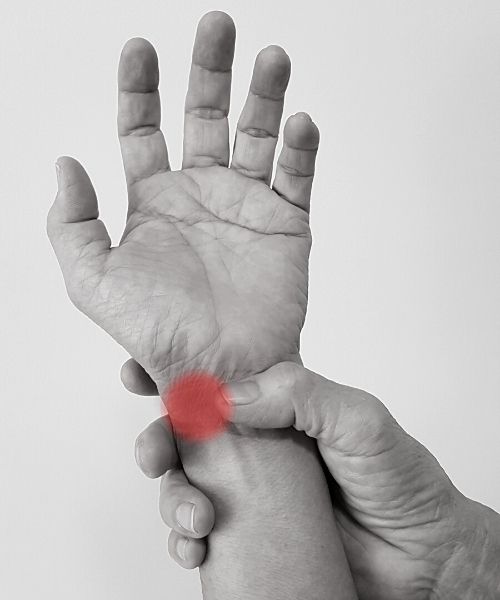
Office jobs and wrist conditions
The impact of office work
Available evidence suggests that many Australians sit for considerable amounts of time each day, mostly those having desk jobs. For example, data from the Australian Health Study showed that adults report on average 39 hours per week being sedentary, with about 10 of these hours spent sitting at work. Safe Work Australia found that 81% of Australian workers reported at least some amount of sitting at work. Further, use of objective measures of sitting have shown that ‘white collar’ office workers spend around three-quarters of their working hours. Many ‘blue collar’ non-office workers also accrue considerable amounts of sitting time and working at desk.
What office work does to our hands
- Sustained positions and lack of movement variability: our bodies are designed for variable movement – walking, climbing, bending, and twisting. The hands are pinnacle of the movement evolution providing the largest movement variability compared to any body part. They can do both forceful movements like gripping, pushing and pulling, and a fine control with fingers or precision light gripping. Office work puts the hand in the very narrow spectrum of hand movement, predominantly wrist extension and deviation. Sustaining same position and doing only small amount of movement creates the excessive load. Fatigue on the involved hand and wrist structures also occurs which can lead to injury.
- Poor/suboptimal ergonomics: having the hands on the keyboard naturally loads the wrist joint and tendons more than usual. However poor desk setup e.g., the height of the desk or keyboard relative to the person’s height and arm length, the size or layout of the keyboard, the position of the mouse/keyboard on the desktop, can exacerbate that load even further leading to strain or injury.
- Prolonged hours: Standard 38-hour office week means that besides the work tasks that put stress on our muscles and joints, there are also outside-work activities that we still need to do, such as looking after ourselves and family, housework and hobbies. Our arms are always in use and working full time only adds to the load.
Although we must note how office jobs can be lead to wrist injuries, it is also important to acknowledge that there is preventative management. Follow our tips below to minimise your risk of wrist injuries and to maintain their optimal function:
-
Include some wrist range of motion exercises into your day
• Every 30 minutes aim to do 5 minutes of gentle wrist movements such as wrist rolling, flexion, extension and finger open and closing.
• Do some shoulder rolls, tricep and biceps stretches to mobilise the upper limb
2. Posture
• Ensure that your desk is at a height where your shoulders aren’t raised, the keyboard sits so that the wrists are in a neutral position when typing
• A stand up desk can be a great way to break up long hours of sitting in the day
3. Rest breaks
• Rest breaks every hour are important for eyesight, posture, and mental clarity.
Although there are some techniques and tricks that can help mobilise your wrists, wrist injuries may still occur. In our next blog post we will discuss some common wrist injuries resulting from office jobs. If you have any concerns with anything body-related, book into the clinic to discuss your needs with the physio Brisbane works with to move more optimally and pain free!





